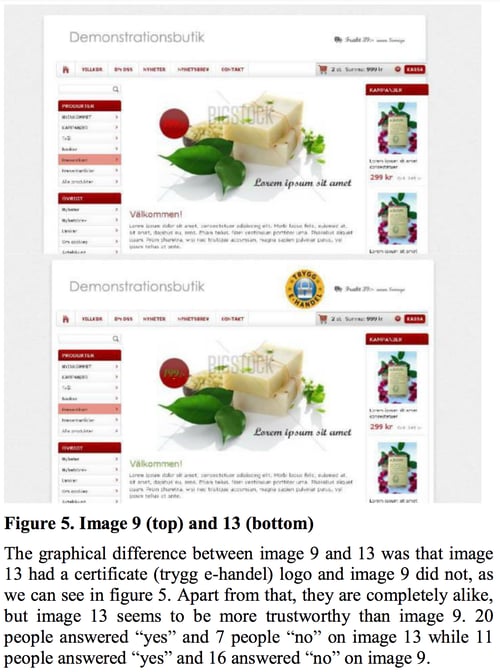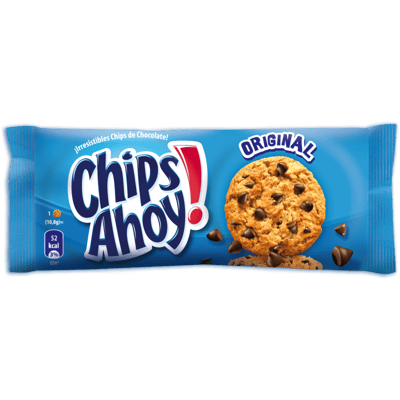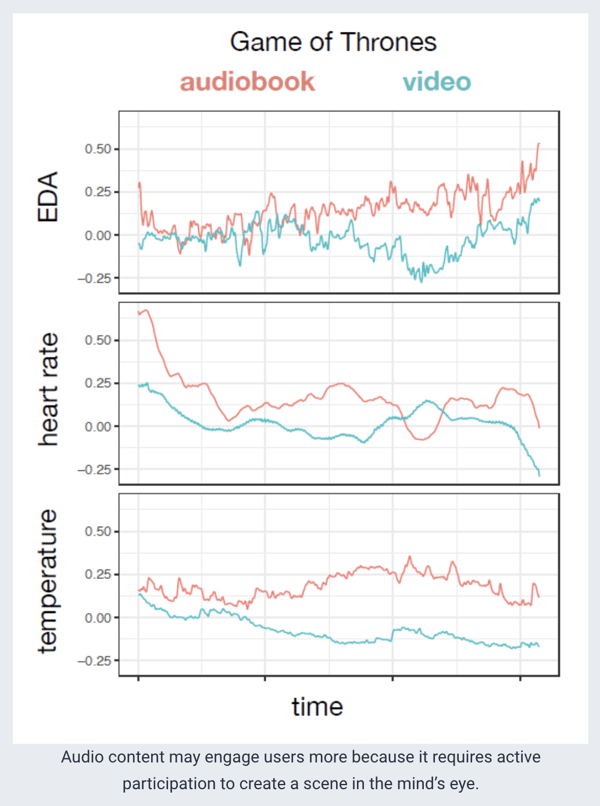What is neuromarketing?
Neuromarketing offers marketers powerful insights into how people make decisions, such as how advertisements influence behavior, how pricing impacts willingness to buy, and what factors shape consumer choices overall.
Examples of neuromarketing are all around us, if we take the time to look.
In this article, we’re sharing key neuromarketing studies that could guide your next campaign. Let’s dive in.
Neuromarketing Defination
Neuromarketing applies neuroscience to marketing. It explores how the brain processes information, and what insights we can use to influence branding, advertising, and product design.
It adds a scientific layer to traditional marketing strategies. By conducting experiments using the scientific method, neuromarketing helps us understand how the brain responds to various stimuli, and how that shapes buying decisions.
Examples of Neuromarketing
1. Ad Design Isn’t the Biggest Indicator of Success
As marketers, we often ask: How can we make the most of our budget?
Francisco Muñoz-Leiva, Janet Hernández-Méndez, and Diego Gómez-Carmonac explored this question through a neuromarketing study using eye-tracking technology to measure the effectiveness of advertising in the tourism sector.
The study analyzed the visibility and recall of advertising banners placed on three platforms: a hotel blog, Facebook, and TripAdvisor. It tracked eye movements and measured how well participants remembered the promotional content.
Key Findings:
The Facebook banner generated the highest attention and recall, despite being placed in the same position across all platforms.
Participants viewed the Facebook ad more frequently and for longer periods.
This was attributed to Facebook’s simpler page layout, which guided users’ attention more effectively. In contrast, TripAdvisor and the hotel blog had more content competing for attention.
Conclusion:
Website layout plays a significant role in ad performance, not just the design of the ad itself.
2. Different Payment Methods Generate Different Emotions
The research team set out to understand how the payment options available on a website impact consumer trust—an increasingly critical factor for eCommerce brands.
The study compared two primary payment methods: PayPal and credit cards. All 30 participants completed simple online purchases while their emotional responses were recorded.
Key Finding:
Consumers perceived PayPal as a safer, more rewarding, and more trustworthy payment option.
In contrast, credit card-related actions were associated with negative emotions and even perceived risks.
3. First Impressions Matter: How Web Design Influences Trust
We’ve always known that first impressions are important — but thanks to a neuromarketing study by Gustav Bergman and Felix Noren, we now understand why.
The researchers created multiple web pages with different combinations of colors, backgrounds, trust badges, and contact details. Participants were shown each page for 7 seconds and then asked:
“Do you think this online store is trustworthy?”

Key Insight:
- The only visible difference between Image 9 and Image 13 was that Image 13 had a
trust certificate logo.
- As a result,
Image 13 was rated as more trustworthy, even though the layouts were otherwise identical.
Results:
– 20 people said “yes” and 7 said “no” to Image 13
– 11 said “yes” and 16 said “no” to Image 9
In addition to trust ratings, the researchers also measured how long participants took to respond.Conclusions:
- There’s no correlation between response time and trust.
- The biggest factor influencing trust was the quality of the web design.
- The more visually polished and well-designed the page, the more confidence it inspired.
Takeaway:
Investing in thoughtful, quality design builds credibility, often in just a few seconds.
4. How Packaging Design Influences Purchase Decisions
- Chips Ahoy conducted a study to evaluate the impact of its packaging—and uncovered a key issue:
Consumers reported that the product was hard to read and visually unappealing due to its color choices and bland imagery.
To address this, the brand ran a neuromarketing study using eye-tracking technology to understand how consumers visually interacted with different package designs.
Based on the findings, they introduced several packaging updates:
- The cookies are now sold in a resealable tube
- Typography and color contrast were enhanced
- The product image was redesigned to feel more fun and engaging
The result? Packaging that grabs attention and supports better buying decisions by aligning with consumer perception and preference.

5. Representation Impacts Audiences Differently
In recent years, superheroes have exploded in popularity. To better understand how they’re perceived, the BBC partnered with iMotions, Screen Engine/ASI, and the Women’s Media Center to explore how adolescent boys and girls respond to female superheroes.
The goal was to examine how the portrayal of male and female superheroes influences adolescents’ self-esteem and self-confidence.
Researchers showed participants a series of TV trailers featuring both male and female superheroes including The Flash, Supergirl, Wonder Woman, and Luke Cage.
Using eye-tracking tools, they measured participants’ physical reactions, facial expressions, and visual focus during the viewing sessions.
Key Findings:
- Girls responded more positively to trailers that portrayed strong, non-sexualized female characters.
- When female protagonists were sexualized, girls lost interest and stopped engaging.
💡 Takeaway:
Character representation matters. How you present heroes—whether in marketing, media, or branding, can shape how your audience responds.
If you want to inspire, authentic and empowering portrayals are far more effective.
6. Audio vs. Visual: Which Triggers a Stronger Emotional Response?
It’s easy to assume that video delivers a stronger emotional punch than audio, after all, it combines visuals, sound, and storytelling. But with the rise of podcasts and audiobooks, researchers at University College London wanted to explore:
Which medium actually engages us more: audio or video?
The team selected equivalent scenes from books and movies like Game of Thrones and The Silence of the Lambs. Each scene had strong emotional content and was presented in both video and audiobook formats.
Participants watched and listened while researchers tracked their heart rate, skin temperature, and electrodermal activity (EDA) using biometric sensors.
Findings:
- Participants said the video was 15% more interesting.
- But their bodies told a different story:
- Audiobooks triggered faster heart rates
- Higher skin conductivity
- Increased body temperature
Why?
Researchers believe that listening demands more imagination and creates a more personal, immersive experience. Because audio requires the listener to actively construct mental imagery, it may feel more emotionally intimate and engaging.
Takeaway:
If you’re aiming for deeper emotional impact; especially in storytelling or branding, don’t underestimate the power of sound.

Coca-Cola: How Neuromarketing Powers an Iconic Brand
Coca-Cola is a globally recognized beverage brand known for emotionally resonant storytelling and visually consistent branding. Through neuromarketing, Coca-Cola leverages emotional and sensory triggers to enhance subconscious engagement, brand recall, and purchase behavior.
The image below displays an attention heatmap from a Coca-Cola campaign, showing how visual design can influence viewer focus.

What Neuromarketing Techniques Does Coca-Cola Use in Advertising?
- Eye-Tracking: Coca-Cola uses eye-tracking in both retail environments and digital settings to monitor visual attention on packaging, product placement, and branded displays. This helps the brand identify high-visibility zones and optimize visual layouts for in-store conversion and brand recall.
- EEG (Electroencephalography): Coca-Cola employs EEG to assess consumer brain responses during exposure to its advertising campaigns. By measuring emotional intensity and cognitive load, the company fine-tunes visual storytelling and message delivery to maximize engagement.
- Sensory Branding: Coca-Cola incorporates multisensory cues—including its signature red color, the sound of a bottle opening, and the taste of its product—to evoke emotional associations and strengthen long-term brand loyalty. These sensory triggers are informed by neuromarketing insights on emotional memory and brand perception.
What Are Real-Life Examples of Coca-Cola Using Neuromarketing in Advertising?
- The “Share a Coke” Campaign: Personalized names on bottles created a sense of emotional connection and encouraged consumer interaction through social sharing.
- Holiday Campaigns: Iconic Christmas advertisements use nostalgic visuals, color, and music to activate emotional memory and reinforce brand identity.
Neuromarketing Impact on Coca-Cola’s Strategy
Coca-Cola’s neuromarketing strategies support emotional branding, helping the brand maintain global resonance. Coca-Cola’s approach aligns with leading neuromarketing methodologies used to enhance emotional salience and long-term memory encoding in advertising.
Google: Enhancing Ad Strategy with Neuromarketing
Google is a global technology leader in search, advertising, and digital innovation. Neuromarketing in Google’s advertising strategy focuses on cognitive processing, emotional engagement, and decision-making patterns to improve user interaction and ad performance.
What Neuromarketing Techniques Does Google Use in Advertising?
- EEG (Electroencephalography): Google uses EEG to monitor how users emotionally and cognitively respond to ad formats, including skippable vs. non-skippable YouTube ads and various keyword presentations. This helps refine message clarity and emotional appeal.
- Eye-Tracking: Eye-tracking is used to analyze how users visually engage with search engine results, ad placements, and YouTube content. These insights inform ad layout, call-to-action positioning, and visual hierarchy.
- Implicit Association Testing (IAT): Google applies IAT to uncover subconscious associations between brand messaging and user perception. This technique supports brand voice refinement and more targeted audience segmentation.
What Are Real-Life Examples of Google Using Neuromarketing in Advertising?
- Search Results Optimization Studies: Google conducted eye-tracking experiments to determine how different search result layouts influence user attention and engagement.
- YouTube Ads Engagement Analysis: EEG and facial coding were used to evaluate viewer reactions to different ad types, helping Google optimize emotional appeal and reduce cognitive fatigue.
Neuromarketing Impact on Google’s Strategy
Google uses neuromarketing to inform ad format decisions, improve visual design, and strengthen emotional engagement across search and video platforms. These insights enable more intuitive, data-driven advertising experiences that align with how users think and feel.
McDonald’s: Driving Fast, Familiar, and Emotional Responses
McDonald’s is a global fast-food brand known for visual consistency, rapid service, and emotionally resonant campaigns. Neuromarketing in McDonald’s advertising strategy focuses on visual salience, emotional conditioning, and environmental interaction to influence consumer behavior.
The image illustrates McDonald’s strong color recognition (color psychology).

What Neuromarketing Techniques Does McDonald’s Use in Advertising?
- Eye-Tracking: McDonald’s uses eye-tracking studies to observe customer gaze behavior on digital menu boards, self-service kiosks, and in-store displays. This helps optimize visual layout, highlight key promotions, and reduce friction in the ordering process.
- Color Psychology: Red and yellow, consistently used in McDonald’s branding and restaurant design, are associated with appetite stimulation and emotional warmth. These color choices are supported by neuromarketing insights on visual-emotional triggers.
- Facial Coding: McDonald’s measures subconscious emotional reactions during in-store and digital ad experiences. Emotional response data helps refine storytelling, humor, and call-to-action effectiveness in campaigns.
What Are Real-Life Examples of McDonald’s Using Neuromarketing in Advertising?
- Digital Menu Board Optimization: Eye-tracking studies led to improved layout and design of digital menus, boosting clarity and drawing attention to high-margin items.
- Self-Service Kiosk Interaction: Eye-tracking informed interface redesigns that improved user flow and reduced cognitive load during the ordering process.
Neuromarketing Impact on McDonald’s Strategy
McDonald’s uses neuromarketing to reinforce a fast, emotionally positive customer experience. By applying neuroscience insights, the brand improves message clarity, visual attention, and emotional satisfaction at both physical and digital touchpoints.
Frito-Lay
Frito-Lay is a leading global snack brand under PepsiCo, known for Lay’s, Doritos, and Cheetos. The company incorporates neuromarketing to refine advertising, packaging, and emotional resonance.
The image illustrates eye-tracking research applied to Frito-Lay’s shelf positioning.

What Neuromarketing Techniques Does Frito-Lay Use in Advertising?
- EEG (Electroencephalography): Frito-Lay uses EEG to evaluate how consumers respond emotionally and cognitively to its advertisements. The brand uses these insights to tailor storytelling and visuals for better memorability and emotional impact.
- Biometric Analysis: Frito-Lay uses biometric analysis to monitor heart rate and skin conductance, tracking unconscious emotional arousal in response to specific designs and messaging in ads and packaging.
- Facial Coding: Frito-Lay uses facial coding to analyze expressions during ad viewing, detecting emotional responses to humor, pacing, and tone to guide creative refinement.
What Are Real-Life Examples of Frito-Lay Using Neuromarketing in Advertising?
- Doritos Ad Testing: EEG and biometric analysis guided adjustments in ad pacing, narrative structure, and sensory cues to intensify emotional engagement.
- Lay’s Packaging Redesign: Facial coding revealed which visual design elements on packaging triggered positive emotional responses, leading to more appealing shelf presentation.
Neuromarketing Impact on Frito-Lay’s Strategy
Frito-Lay’s neuromarketing efforts enhance emotional appeal, creative decision-making, and product interaction, leading to more impactful campaigns and increased brand affinity.
IKEA: Measuring Emotion to Power Sustainable Storytelling
IKEA is a multinational home furnishing company known for design innovation and sustainability. The brand worked with Neurons to assess how sustainability messaging influenced consumer emotion, attention, and retention.
The image below shows color psychology applied to IKEA stores.

What Neuromarketing Techniques Does IKEA Use in Advertising?
- EEG (Electroencephalography): IKEA uses EEG to evaluate how emotionally and cognitively engaging its sustainability-focused content is, guiding adjustments to tone and clarity.
- Eye-Tracking: IKEA uses eye-tracking to monitor visual attention to environmental messages and design cues, identifying which elements maintain focus and drive recall.
- Facial Coding: IKEA uses facial coding to assess emotional reactions to its environmental storytelling, ensuring alignment with values like trust, innovation, and care.
What Are Real-Life Examples of IKEA Using Neuromarketing in Advertising?
- Sustainability Campaign Testing: IKEA and Neurons optimized messaging for its clean energy and renewable materials campaigns by analyzing EEG and eye-tracking results.
- Visual Framing of Sustainable Products: Emotional and visual engagement data-informed how eco-conscious visuals were positioned, improving clarity and connection.
Neuromarketing Impact on IKEA’s Strategy
IKEA’s collaboration with Neurons provided science-backed validation of its environmental storytelling. These insights helped improve emotional salience, campaign effectiveness, and alignment with IKEA’s brand values.
The table below provides an overview of neuromarketing examples, highlighting the techniques and tools used by leading global brands.

